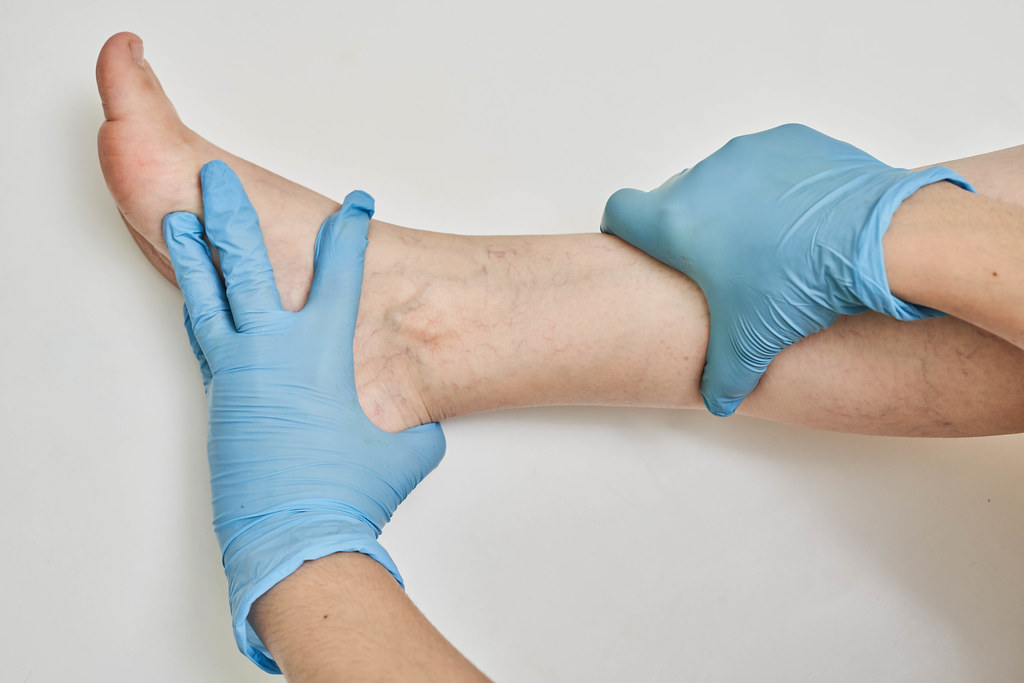Vein damage, a prevalent issue affecting millions worldwide, can significantly impact an individual’s quality of life. This condition spans a spectrum from cosmetic concerns like spider veins to serious health problems such as deep vein thrombosis (DVT) and chronic venous insufficiency. Advances in medical science offer a variety of treatment options, paving the way for effective recovery and restoring healthy circulation. This article explores the contemporary strategies for treating and repairing damaged veins, highlighting the journey towards optimal vascular health.
Understanding Vein Damage
Contents
Vein damage manifests in various forms, each with its own set of symptoms and complications. Varicose veins and spider veins are common, often resulting from venous insufficiency where veins struggle to send blood back to the heart. More severe conditions like DVT, where clots form in deep veins, pose significant risks, including pulmonary embolism. Recognizing the signs and understanding the causes of vein damage is the first step on the road to recovery.
Common Symptoms and Causes
Symptoms of vein damage include leg pain, swelling, heaviness, and visible vein patterns. Factors contributing to vein damage encompass genetics, aging, prolonged sitting or standing, obesity, and pregnancy. Addressing these factors early can mitigate progression and alleviate symptoms.
Modern Treatments for Vein Damage
The evolution of repair damaged veins has moved from invasive surgeries with lengthy recoveries to minimally invasive procedures that offer less discomfort and a quick return to daily activities. Here’s an overview of current treatment methodologies:
Sclerotherapy
Sclerotherapy remains a gold standard for treating spider veins and small varicose veins. This procedure involves injecting a sclerosant solution into the damaged vein, causing it to collapse and eventually be absorbed by the body. The process is quick, with minimal downtime, making it a preferred choice for cosmetic vein issues.
Endovenous Ablation Therapy
Endovenous ablation therapy, including laser (EVLT) and radiofrequency (RFA) options, targets larger varicose veins. Under ultrasound guidance, a catheter delivers heat to the vein’s interior, sealing it shut. This method is celebrated for its effectiveness and minimal invasiveness, offering a successful alternative to surgical stripping.
Venaseal
The Venaseal closure system introduces a medical adhesive to close varicose veins. The procedure involves minimal discomfort and, unlike other treatments, doesn’t require compression stockings post-treatment. Patients appreciate the immediate recovery and absence of multiple needle punctures associated with traditional therapies.
Ambulatory Phlebectomy
For superficial veins that are too large for sclerotherapy or endovenous therapies, ambulatory phlebectomy is an option. This minor surgical procedure removes veins through small incisions, typically resulting in minimal scarring and immediate relief from symptoms.
Innovations in Vein Treatment
The field of phlebology is continually advancing, with research focused on enhancing treatment efficacy and patient comfort. Innovations such as robotic assistance for precision in invasive procedures and developments in non-thermal ablation techniques promise to further revolutionize vein treatment.
Stem Cell Therapy and Regenerative Medicine
Emerging research into stem cell therapy and regenerative medicine offers hope for not just treating but potentially reversing vein damage. These approaches aim to repair and regenerate vein tissue, restoring normal function and offering a more permanent solution to vein disorders.
Lifestyle Changes and Preventive Measures
In conjunction with medical treatments, lifestyle modifications play a crucial role in managing vein health and preventing further damage. Regular exercise, maintaining a healthy weight, elevating the legs, and wearing compression stockings can all contribute to improved circulation and vein function.
Importance of Early Intervention
Early diagnosis and intervention can prevent the progression of vein damage and avoid complications. Regular check-ups and vascular assessments are essential, especially for individuals at higher risk due to genetic factors or lifestyle.
The Recovery Process
Recovery from vein treatment varies depending on the procedure and individual circumstances. Most modern treatments allow for quick recovery, with patients returning to normal activities within days. Follow-up care, including ultrasound exams, ensures the long-term success of treatments and monitors for potential recurrence.
Conclusion
The journey to recover from damaged veins is now more accessible and effective than ever, thanks to advancements in medical treatments and a better understanding of preventive care. From minimally invasive procedures to promising innovations on the horizon, individuals suffering from vein disorders have multiple options for restoring their vascular health. Coupled with lifestyle modifications and early intervention, the road to recovery offers hope for those seeking relief from the symptoms and complications of damaged veins, promising an improved quality of life and overall well-being.

